The odds are good that if you read many new vehicle reviews online or in magazines, you have wondered what the people who review high performance cars drive when they aren’t in a test car. You might be surprised to learn that in many cases, the people reviewing performance cars have never owned one and never will. Many reviewers drive minivans, crossovers or some other appliance-type vehicle and their only frame of reference is test drives.
On the other hand, as many of our regular readers know, my personal car is a 2017 Dodge Challenger SRT Hellcat and over the past 20 years, I have daily driven an assortment of other V8-powered, rear-wheel-drive cars. I love muscle cars or pony cars or whatever else you want to call the class that plays home to the Challenger, the Mustang and the Camaro, and I have since well before I was old enough to drive.
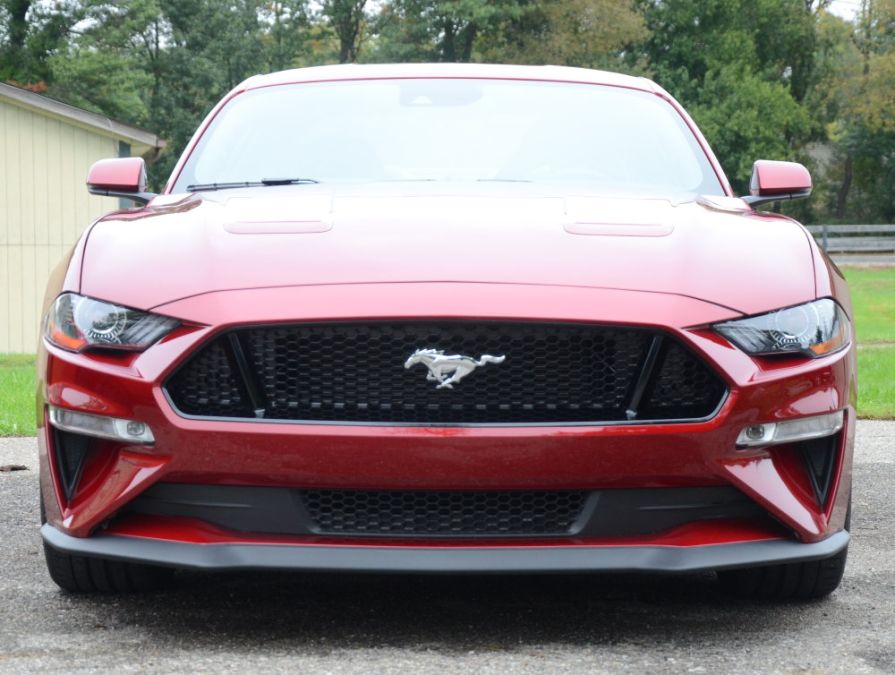
I know what it is like to live every day in a muscle car and with the Mustang being one of the prime competitors for my personal vehicle, I was excited to spend a week with the 2018 GT fitted with Performance Package. To be clear, I don’t mean that the Mustang GT with the Performance Package is a direct competitor for my Hellcat Challenger, but the Challenger and Mustang compete in the same segment while being two very different beasts – both of which are very good at what they do. However, I want to make it clear that this is not a head-to-head comparison between the two, although I will point out some aspects of the Mustang that I prefer over a similar feature of the Challenger.
The Exterior Design
The Ford Mustang got a new face for the 2018 model year that looks much angrier than the previous design and I like this new look better. I like the narrowed headlights and the way that the hood flows down to the large grille opening, creating that menacing look, while a frenzy of sharp angles throughout the entire front end give the car a very modern look.
The fastback roof design carries forward the slippery look created by the new hood and fascia design while the unique spoiler of the Performance Package punctuates the topline of the car with an exclamation point.
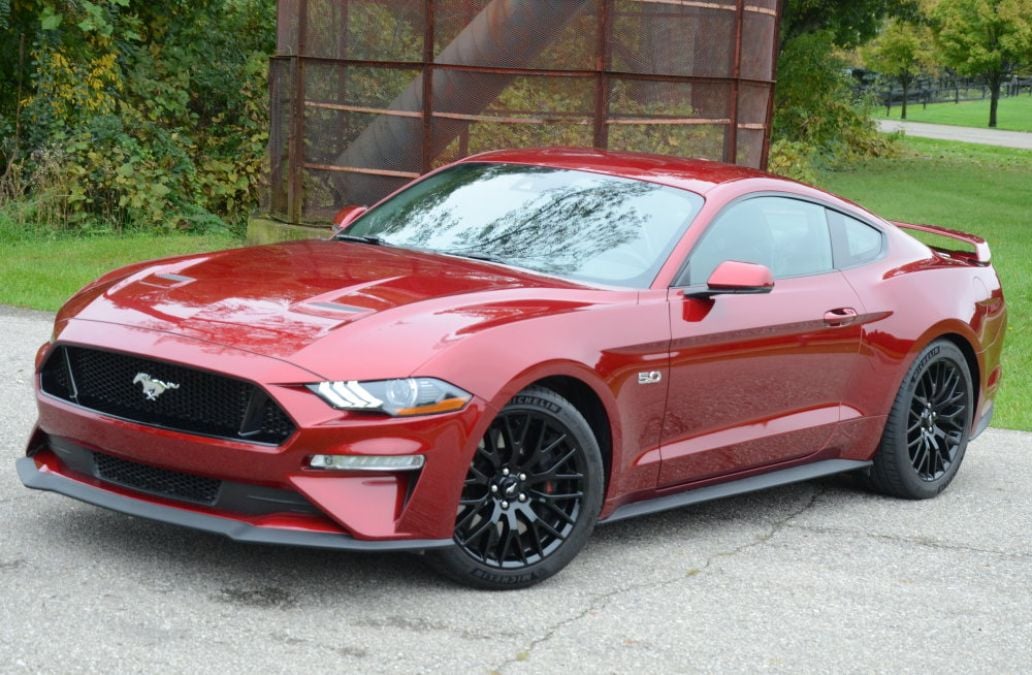
Really, the exterior design of the Mustang is completely unlike that of the Challenger, shy of the fact that they are similarly-sized, two-door hardtops. The Mustang has a much smaller and sleeker form, offering a far more modern look while the Challenger is bigger and has more of a retro style. The styling is different enough between the two that it could sway a buyer to pick one over the other, but in terms of the evolution of the modern Mustang styling – I think that the look is a complete success.
The Interior
In the same way that the exterior of the two modern muscle cars are different, the interiors are remarkably unique from one another aside from their basic layout. The Challenger has more interior space, but the way that the Mustang GT interior wraps around you as the driver provides more of a “sport car cockpit” feel without compromising seating space around the driver. More importantly, my Mustang GT test car was fitted with leather Recaro sport seats that you cannot get in the Challenger. I am not saying that there is anything wrong with the SRT seats in the Hellcat or the standard seats in the Mustang GT, but the Recaro seats provide a combination of comfort and stability under hard cornering that you can only get from this type of seat. Plus, the Recaro seats just plain look great, giving the interior a much sportier look than a standard bucket seat.
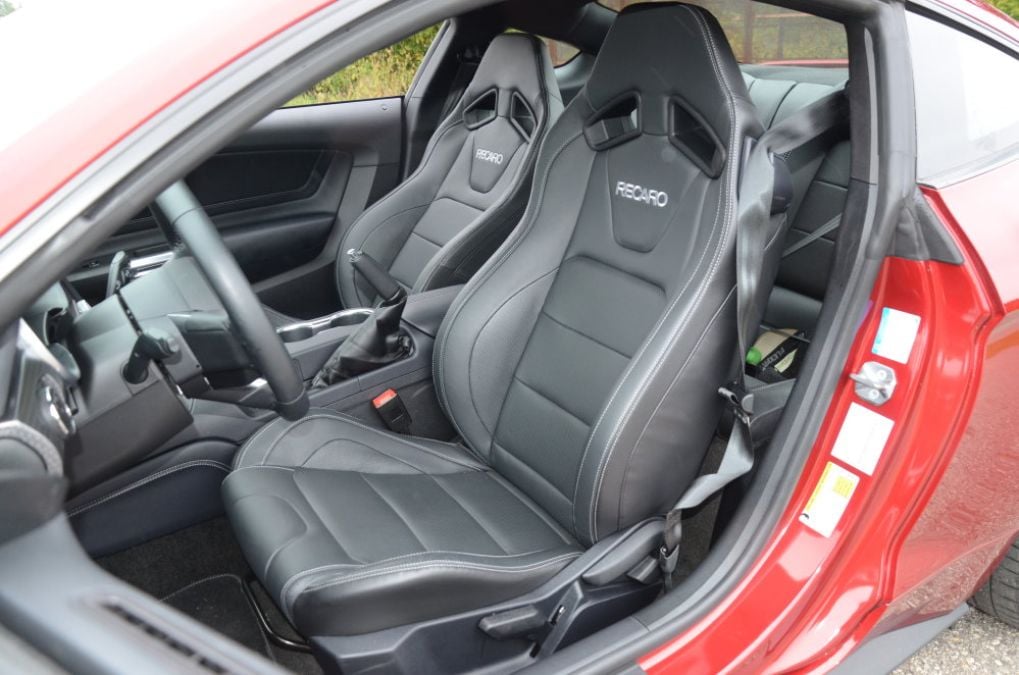
Next up, we have the trick gauge cluster of the 2018 Mustang GT that stands out against just about anything, including cars in the high-priced luxury world. In the “normal” drive mode, the cluster is laid out in the traditional two-gauge design, with a big tachometer on the left and a big speedometer on the right, both of which flank an information screen in the middle. When you switch to Sport mode, the speedometer doesn’t change, but the tachometer extends across the top of the gauge cluster area, making it easier for the driver to watch engine speed when pounding through gears. Finally, when you switch to Track mode, the tachometer is a linear unit running across the top with a large numeric engine RPM readout on the left and a big numeric speedometer readout on the right.
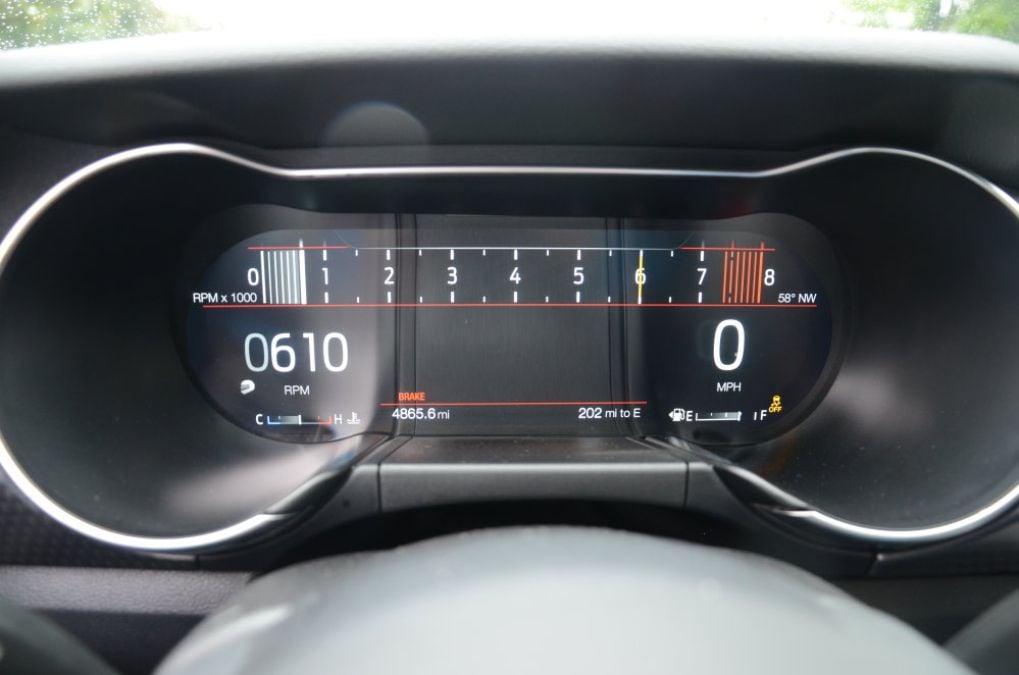
This is one of the coolest gauge cluster designs in the US market today, preserving the traditional two-pod design while integrating a look that is much easier to see during stints of spirited driving. In addition to the different layouts, the 2018 Mustang GT includes Track Apps with built-in performance timers, allowing you to measure your 0-60, quarter mile and other performance times right in the gauge cluster. This gauge system checks all of the boxes.
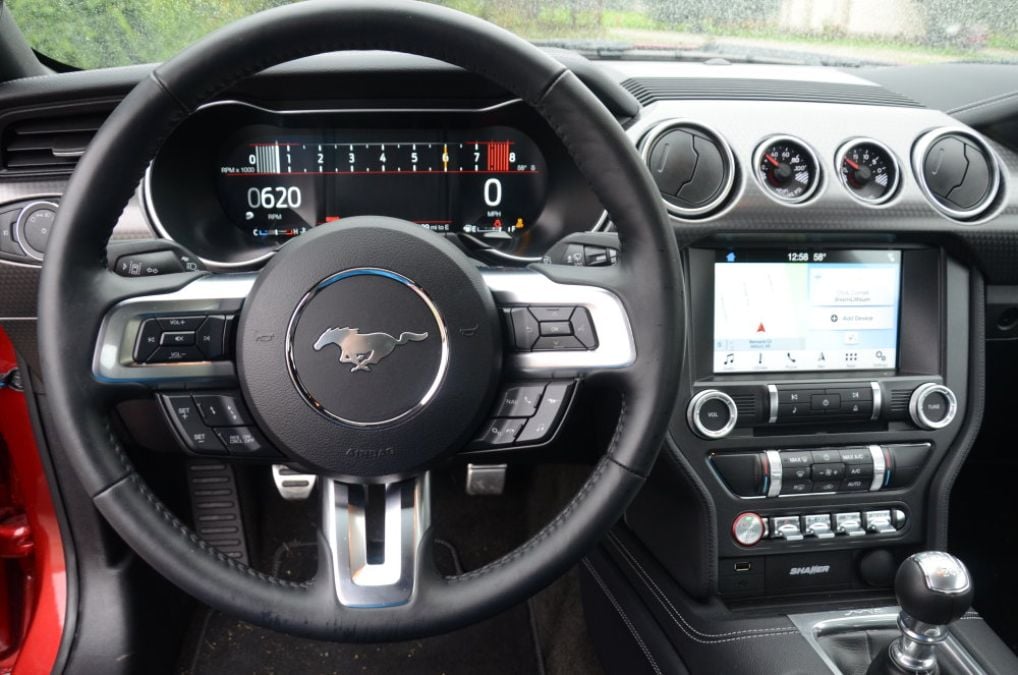
Another feature that I really like about the 2018 Mustang GT with the Performance Package is the dedicated switch panel in the bottom of the center stack that comes as part of popular equipment group 401A. This area includes the Engine Start/Stop button along with toggle switches for the hazard lights, the traction control system, the adjustable steering system and the drive mode system. The Hellcat uses a menu on the infotainment screen to make changes to things like the drive mode and the traction control setting, and that system works nicely, but I would like to have an easy-access switch panel like the Mustang. Plus, this is another feature that offers improved functionality while looking bolstering the cool-factor of the cockpit-like cabin.
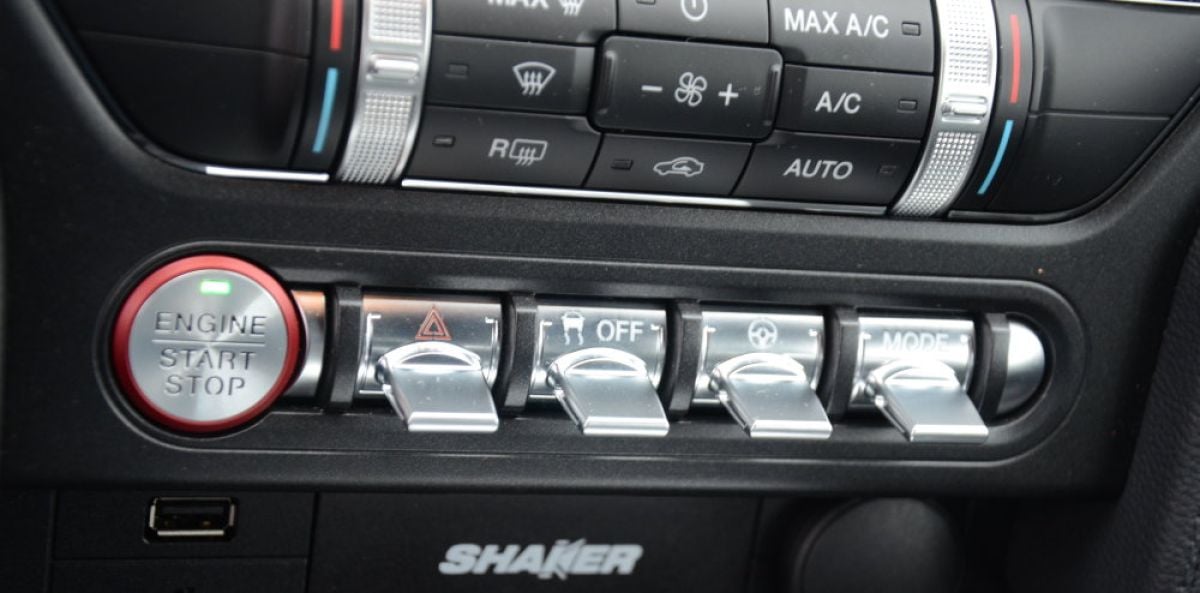
The Drive
The current Mustang GT is powered by the latest iteration of Ford’s 5.0-liter V8, sending 460 horsepower and 420 lb-ft of torque towards the rear wheels by means of a 6-speed manual transmission. My test car was also equipped with the MagneRide active suspension system, the active valve exhaust system and the GT Performance Package. Obviously, the Ford doesn’t offer the brute strength of the Hellcat Challenger, but the Mustang GT shines bright in a whole different way.
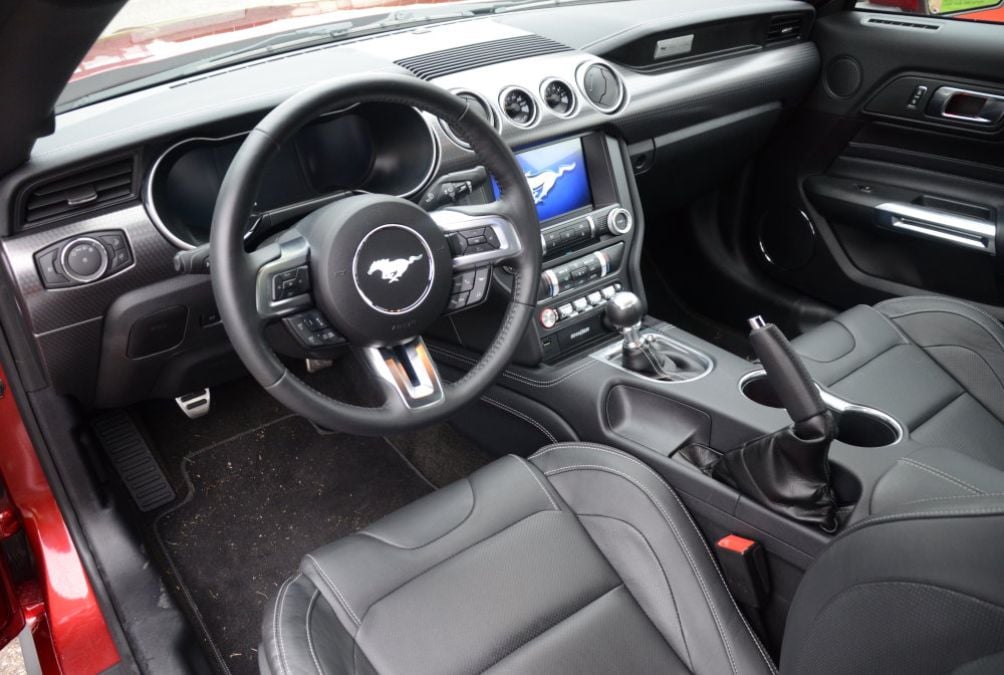
First, the Mustang GT’s available power makes it very quick, being very capable of quarter mile times well into the 12-second range while also being capable of outrunning the vast majority of new, stock cars on the road today. What makes the acceleration of the Mustang so unique is the high-revving nature of the 5.0-liter V8, hitting its peak output at 7,000 rpm while spinning to a shocking 7,400 rpm. Muscle cars (and pony cars, if you prefer to make a distinction between the two) have generally been lower-revving engines, so the Coyote V8’s big engine speeds and the exhaust note at those high engine speeds make for a more visceral driving experience. The engine still makes good power down low, but to get peak power, you need big engine speeds and it is fun twisting the V8 that hard. That high-revving powerband allows you more range when gearing down for a hard pull from a roll, making for longer, harder pulls between shifts or allowing you to stay in gear during stints of spirited driving – such as when pulling hard down a road course straightaway leading into a hard turn.
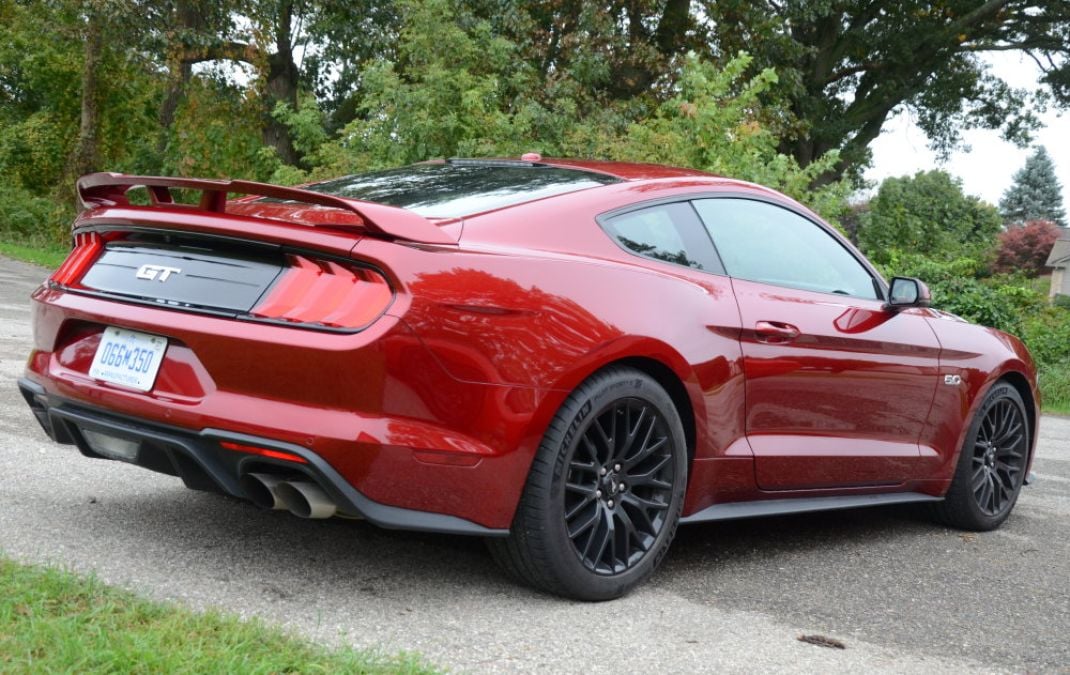
Next, I love the active valve exhaust system of the Mustang GT. The Hellcat Challenger has a similar system and while my Dodge might be louder in Track mode at wide open throttle, the Mustang GT in Track mode has more grumble at idle and at lower engine speeds. Simply put, the Mustang has more rasp and grumble under normal driving situations in the Track setting, but I also prefer how Ford’s active exhaust system works. In the Challenger, the exhaust volume is tied into the drive modes, with Track mode being the loudest, but to get the loudest exhaust, you also have to drive in Track suspension mode, which is the stiffest setting. If you don’t like riding around in that stiff setting in the Challenger, you have to settle for a quieter exhaust mode.
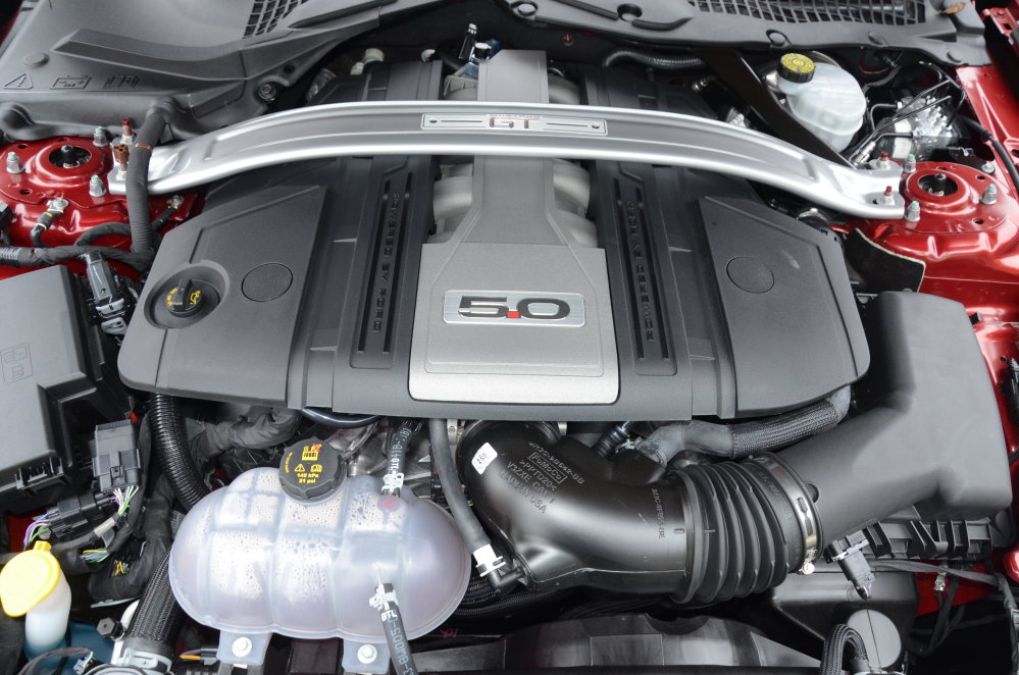
With the Mustang, the exhaust setting is adjusted manually from the driver information center, using the buttons on the steering wheel. This allows you to pick the loudest exhaust mode even when the car is on Normal mode, so you can have the smoothest, most comfortable ride with the sharpest exhaust note and that is a feature that I really wish my Challenger had. If you are buying a new Mustang GT, you want the active valve exhaust system, without question. The functionality is great and the different exhaust notes are clearly different, making this one of the best adaptive exhaust systems that I have tested.
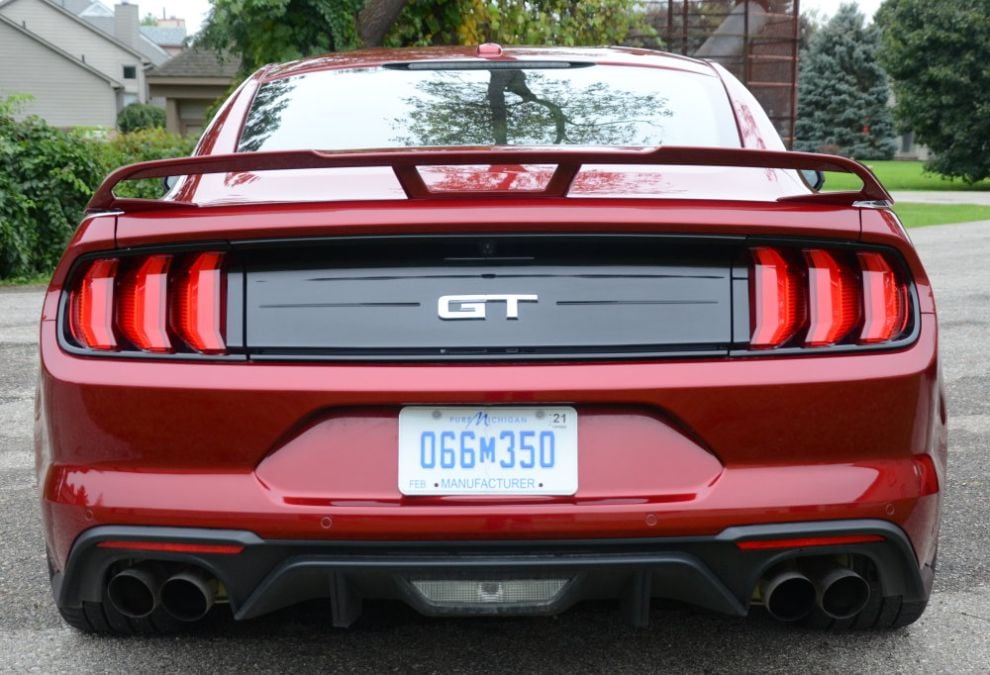
Finally, while the Mustang GT and the Hellcat Challenger differ in many ways, the most significant difference can really only be felt from behind the wheel. The two cars are the same basic size, but this Mustang is somewhere in the area of 600 pounds lighter than my Challenger while also having far better tires. The weight difference translates into crisper cornering, making the Mustang GT far more enjoyable to throw through a series of tight turns. The lighter car also has sharper braking, so when it comes to carving along a curvy country road or a tight road course, the Mustang GT is an absolute blast. In fact, when you get to really pushing the Mustang hard on a twisty road, Ford’s push to make their pony car more of a sports car with global appeal is evident.
The Final Word
While the Ford Mustang GT isn’t the most powerful car in the segment – or in the Mustang lineup – this car is filled with reasons for people who love to drive to love this car. The exterior styling is aggressive and modern, the interior is chock full of technology that wraps around you like the cockpit of an F-16 and the driving dynamics are reasonably compared to those of the popular European road-handling machines. It really isn’t a reasonable comparison to the Challenger because the two differ so much in how they perform, but after spending a week in the Mustang GT, there is no question as to why it is so popular.
The Mustang GT offers the power and acceleration that you expect from an American muscle car coupled with sports car handling and all sorts of items that just plain make for a cooler performance car. It looks great on the outside, the interior is comfortable and the performance will get anyone’s blood pumping, which is why this is the bestselling sporty car in the world.













Comments
Great review Patrick. I have
Permalink
Great review Patrick. I have always thought that auto journalists should be required to list the cars that they actually own in their byline. If only to show bias and personal knowledge. I owned older (90s) Mustang and Corvette convertibles, and still own a RT/10 Viper. New Ponycars are simply amazing, offering power and performance that rivals supercars of the past. There is a big range of engine offerings on todays Ponycars. From turbo 4 cylinder models, V6, V8, and supercharged V8s. Producing a range of competitors to Asian and European imports, to rental commuters, to modern muscle cars, to racetrack ringers. It truly is a great time for American performance cars. Thanks again for the even-handed review with the perspective of someone who knows what they love about Ponycars.
Interesting review of style,
Permalink
Interesting review of style, looks, options, sound, and general handling. Somewhere, I must have missed the price and performance … other than one comment "capable of quarter mile times well into the 12-second range while also being capable of outrunning the vast majority of new, stock cars on the road today". With your attention to detail, it would have been nice to actually have some real performance data and price, so it could actually be compared to cars within and outside the segment. Nice review, but please give us more.
You'll find the most suitable
Permalink
In reply to Interesting review of style, by Contheon (not verified)
You'll find the most suitable 휴게텔사이트 services
as part of your area.